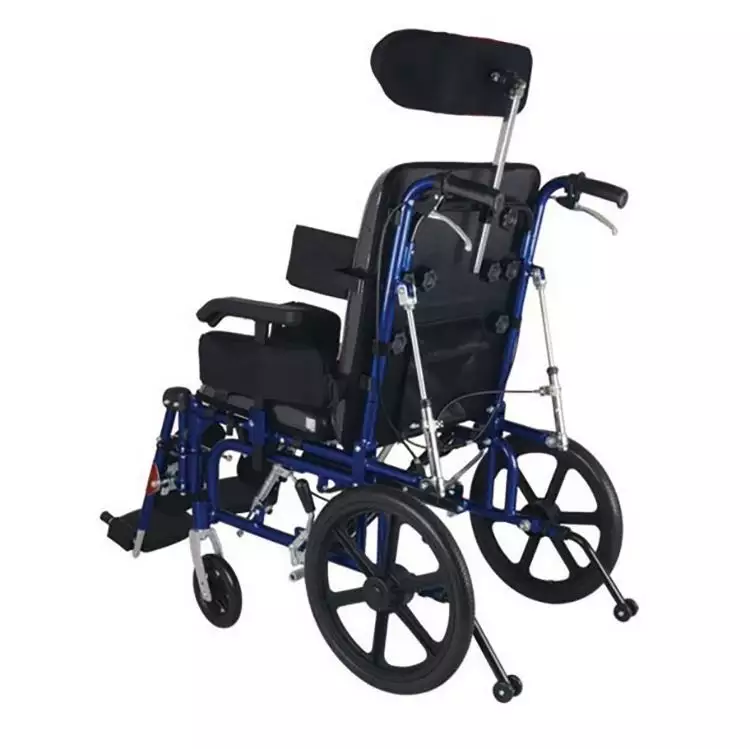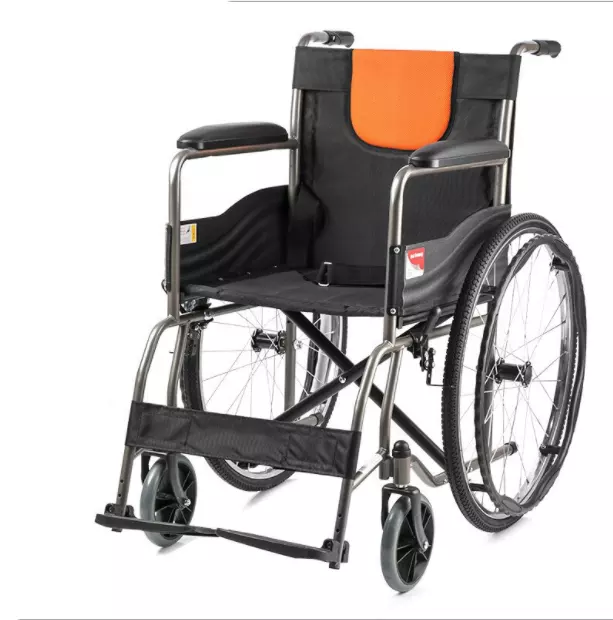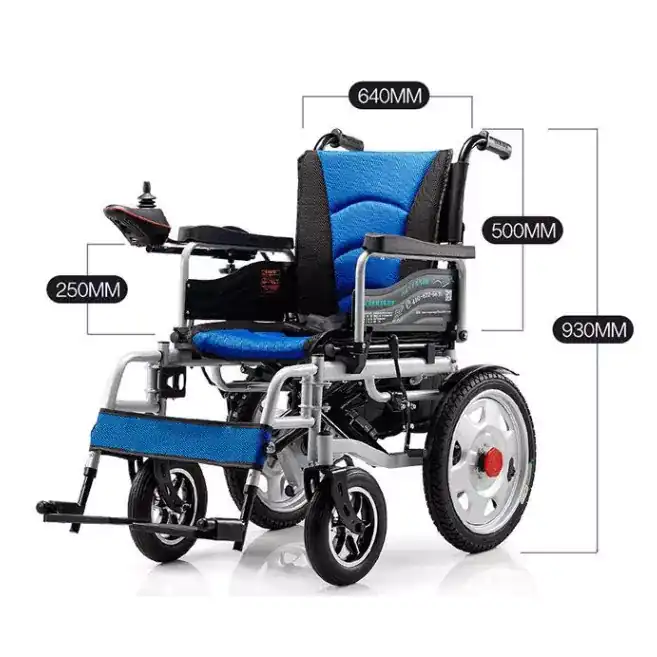Wheelchair Tebang Tech
People are not “confined” to wheelchairs – in fact, they are liberated by them. A paralyzed person in a wheelchair can get around as fast as anyone else. Wheelchairs make it easier for people to work, shop or travel.
In some ways, wheelchairs are like bicycles: there are many designs and styles to choose from, including imported, lightweight, competition models and more.
A wheelchair is also like a pair of shoes, with different styles for different specific uses, such as tennis shoes or trail shoes. Shoes that don’t fit well won’t be comfortable to wear and therefore won’t function to their fullest potential.
Choosing the right wheelchair, especially for a first-time user, can be tricky. It never hurts to choose with an occupational therapist (OT) who is experienced in wheelchair therapy.
The first wheelchair people choose is because the insurance company is willing to pay for it. However, the second wheelchair is usually chosen because of its style, performance or other features.
Manual wheelchairs
People with good upper body strength often use manual wheelchairs – a manual wheelchair is propelled forward with the arms by grasping the rims with both hands.
About a generation ago, the standard wheelchair was a chrome-plated behemoth that weighed about 50 pounds. Today’s standard wheelchair comes in every color you can think of and weighs less than half of what it did.
Modern wheelchairs are far superior in design and performance – they are more realistic to use and easier to push than wheelchairs of past generations. The lightweight units are also easier to lift in and out of cars, whether they have rigid or collapsible frames.
In general, a rigid frame (one that does not fold) makes more efficient use of the user’s strength and allows for more efficient forward motion than a collapsible frame. However, the main advantage of folding wheelchairs is portability. Some folding units can even fit into the overhead luggage rack of an airplane.
In recent years, wheelchair manufacturers have added suspension systems as an alternative, which greatly increases the smoothness of the ride. The trade-off is that such wheelchairs are safer, but at the same time the weight (the impact adds a few pounds) and price can be higher.
Aftermarket products (i.e., frog legs) can also be used to add suspension to the front forks. This product is very popular and has been approved for reimbursement by Medicare. Another key innovation is the use of ultra-lightweight titanium for wheelchair frames, which is also better for the shoulder in terms of weight reduction. Titanium is a distant second in the US market.
There are also many alternatives for wheels and tires, including innovations in performance, off-road traction and high-end style. A company called Spinergy has introduced a line of high-performance wheelchair rims. They’re light and stay true to form. The company recently introduced a new propulsion rim. The soft rubber FlexRim bridges the gap between the rim and the tire for easier, low-impact propulsion that protects hands and arms from impact.
Alternative to manual wheelchair propulsion: You don’t have to push the rim on the wheel to move the wheelchair. There are several lever-driven wheelchairs on the market, all of which claim that the shoulders will not be damaged as they would be by pushing on standard rims.
The Pivot dual lever drive replaces the quick-release rear wheels of manual wheelchairs; the Pivot has five levels of drive.
Wijit wheelchairs can reduce the force of propulsion by half compared to using a conventional wheelchair.
Electric Wheelchairs
People who cannot push a wheelchair may need a wheelchair or scooter that is powered by an electric motor and batteries and controlled by a joystick.
Electric chairs come in several basic styles. The traditional style looks like an enhanced version of a standard wheelchair with additional batteries, motors and control systems. There are also platform-type power wheelchairs plus a regular seat, or captain’s wheelchairs that are fixed to a power base. Scooters are available in three- and four-wheel configurations, and people who don’t need to use them all day may consider having one.
About 20 years ago, the power wheelchair market was limited to a few makes and models. Today’s innovations have diversified the choices with lighter, more powerful and faster wheelchairs. Most power wheelchairs are rear-wheel drive, but mid-wheel and front-wheel drive also have a share of the market. They are easier to turn and very agile in tight spaces.
There are rugged, off-road models; foldable models that accommodate travel; and even some power wheelchairs that can be customized for the most complex needs of paralyzed people. For each user, the right choice is based on more than just style.
Choosing the right power wheelchair for your physical condition and configured to meet your individual needs requires expert help, often from an occupational therapist or a reputable durable medical supplier. How do you find the right supplier? Ask around, ask an occupational therapist, read large forums of tools online.
Need a new wheelchair? It is recommended that you work with your sponsor, your occupational therapist and sitting specialist, and your rehabilitation provider to get the best wheelchair for your needs and to defend your choice in the event that you cannot be reimbursed.
To be sure, reimbursement is a critical issue for all durable medical equipment purchases, especially high-priced items such as power wheelchairs (which can cost more than a fully loaded Honda). The power mobility industry has been the target of a federal investigation into Medicare fraud.
According to a 2011 government report, 80 percent of Medicare claims for power wheelchairs do not meet enrollment requirements and should not be paid by Medicare. As a result, Medicare changed some of its reimbursement rules in an effort to curb fraud. This practice, along with a competitive bidding system with selection restrictions, has met with significant resistance among the disability community.
Batteries
Battery life is a key issue for power wheelchair users. Failure to use power wisely can lead to very problematic situations, especially if you are a long way from home.
Power wheelchair batteries must be of the 24-volt “deep cycle” type that can be discharged for long periods of time, as opposed to the batteries found in cars (12-volt), which are used for short periods of power. Deep cycle units come in a variety of sizes: Group 22, Group 24 and Group 27, for example. The larger the group size, the larger the battery and the more power it can store.
There are three types of batteries.
Lead-acid or “wet” batteries produce electricity when lead and sulfuric acid interact. These batteries need to be filled with distilled water periodically, perhaps once a month. The main advantage of wet batteries is that they are less expensive; the main disadvantage is that they may require special handling, especially if you are traveling by air.
Gel batteries do not have problems with liquid leaks or open caps. They are more expensive than wet batteries, but they last longer and are better suited for air travel.
Absorbent glass mat (AGM) batteries, such as gel cells, require no maintenance and are suitable for air travel. They are very rugged, hold a charge better, and last twice as long as standard lead-acid batteries. At the same time, they are also the most expensive.
Wheelchair batteries are sometimes the same as those used in the boating industry. If you pay for your own wheelchair batteries, you can save money by purchasing marine deep cycle batteries. Be sure to check that the batteries meet the wheelchair manufacturer’s specifications.
Power Assist
A standard lightweight manual wheelchair can be fitted with a small, high-powered motor that is fixed to the hub or attached to the base of the wheelchair. When the power assist is on, pushing the hand rim forward gives the wheelchair a powerful boost.
e.motion is available for many types of wheelchairs. The Xtender is available in two versions on some Quickie series, one that increases the force applied to the hand rim by 1.5 times and one that increases it by 3 times.
These power-assisted wheels add considerable weight (from 38 to nearly 50 pounds) and considerable expense ($5,000 to $8,000) to the wheelchair, but the benefits are significant, especially for people with low-level quadriceps and shoulder pain who don’t have to struggle up steep hills.
With power assistance, the user’s range of motion is greatly increased, saving energy and reducing wear and tear on the rotator cuff. More importantly, the wheelchair doesn’t look like an enhanced power unit: it looks more or less like a “normal” wheelchair.
The SmartDrive is a new power-assist device for manual wheelchairs. It is a portable drive wheel (11 lbs.) that easily attaches to the base of the wheelchair; the battery is mounted under the seat.
Another option, without batteries or motors, is MagicWheels, a two-gear wheelchair wheel that has a lower gear when you need it, and simply presses the hub for power assistance. The device is about one-third the price of a power assist device.
Many insurance companies, including Medicare, will cover power-assisted devices if the user emphasizes the many health benefits they provide (saving the shoulder).
Wheelchairs for Children
Children’s bodies are constantly growing and changing, which means their wheelchairs must be adjusted or replaced more frequently than adult wheelchairs. Because wheelchairs are not cheap and insurance companies often have restrictions on replacement, most manufacturers offer wheelchairs that are adjustable to accommodate a child’s growth.
Wheelchair companies also offer wheelchairs for children who don’t look like they have mobility issues. Optimized exteriors offer more streamlined designs, higher-end interiors and different frame colors.

Colours offers Little Dipper or Chumpe style wheelchairs. Similarly, the Sunrise Quickie Zippie and Invacare Orbit models are designed for younger users who want a stylish look.
Seating and Sitting
Paralyzed people are at high risk for bed sores, so special cushions and seating systems are often needed to relieve skin discomfort.
There are several basic cushioning materials, each of which is beneficial for certain types of users: air, foam or liquid (e.g., gel), of various dynamics, with removable parts.
No one product can do it all. The right cushion can provide comfort, maintain proper sitting posture and prevent bed sores, but it can meet all of these criteria for every user.
A person who can walk who only needs a wheelchair to go shopping obviously has different needs than a paraplegic who sits in a power wheelchair 18 hours a day, so fully understand your needs and choose the right cushion, weighing the pros and cons of different styles.
Foam is the least expensive cushion material. It’s also light and doesn’t leak. However, it does wear out over time and loses its compression power.
Air-float cushions, such as the popular ROHO model, use an even distribution of air to provide support for the rubber insert. They perform well, but can also leak; they also require air conditioning when you change height.
Another type of air cushion, the Vicair Vector, uses a number of small, permanently sealed air bladders. The cushion can be adjusted by pulling back the liner and removing or adding airbags. The BBD air cushion is a single-chamber air cushion that is inexpensive and still widely used for pressure relief. Gel cushions, such as Jay, are filled with a slow-flowing gel. They are popular and effective in protecting the skin, but they are also somewhat heavy.
Aquila is an example of a kinetic cushion; it features an oscillating pump to vary the pressure. The principle is that the valve seat can last longer if pressure alternates with no pressure. This increases the weight of the wheelchair because the pump runs on batteries and is not as light as a static cushion.
Another cushion with dynamic pressure changes is the Ease. some users may prefer a customized cushion that fits their body condition, the Aspen series uses a thin plastic shell made from a mold of the customer’s body.
For a list of available cushions and seating systems, see AbleData or the American Spine Society’s Disability Products and Services Guide, which provides reviews of many wheelchair-related products. It is best to work with a seating and sitting specialist to select the right product.
Power tilt and power recline
Some people use specialized wheelchairs to distribute pressure, thereby reducing the risk of bed sores. These wheelchairs also increase comfort and sitting tolerance time.
One type of wheelchair, called a “tilt wheelchair,” allows a person to change direction while keeping the hip, knee and ankle joints stationary. In fact, the entire seat is tilted. Another type of wheelchair is called a lie-flat wheelchair, which essentially changes the angle of the seat and back, flattens the back, and in some cases, raises the leg position to create a 180-degree plane.
The reclining system redistributes pressure from the hips and rear thighs to the rear trunk and head. The system maintains posture and prevents deflection (friction generated by the tissues when dragging along the surface). It has one drawback: for example, if the user is sitting at a workstation, the reclining wheelchair requires him or her to move backward from the table so that the raised pedals do not hit the table.
A reclining wheelchair system opens the angle of the seat and back while raising the footrest. Reclining wheelchair systems have some advantages for eating, moving, or assisting with bowel movements (easier to lie down).
In general, reclining wheelchairs provide more pressure relief compared to reclining, but carry a greater risk of reclining. Elevated legs may be beneficial for patients with edema. Both tilt and reclining wheelchairs must be patient-adapted and chosen based on the recommendations of seating and posture specialists.
Standing chairs
Standing chairs work just like regular manual chairs, but they can also help elevate the user to a standing position. There are many benefits to being in an elevated position at home, at school and at work.
Some manual wheelchairs are equipped with power-assist devices to activate the rising mechanism. Some power chairs also allow the user to be raised to a standing height, allowing for eye contact with others on an even keel. See Permobil or Redman.
Cons: They are not cheap and are heavy for an everyday wheelchair. Standing also has physical benefits. It helps prevent bed sores, improves circulation and expands range of motion, and for some people, reduces spasms and contractions.
A few years ago, the Hines VA reported that people who stood for 30 minutes or more a day “had a significantly better quality of life, fewer bed sores, fewer bladder infections, improved bowel regularity, and improved leg extension.”
There is also an upright frame. EasyStand is available in several models, including units for children. Some, such as the Stand Aid standing aid, are motorized. Other standing frames are more basic – essentially a static frame used to support a paralyzed person in a standing position.
special wheelchairs
There are other special wheelchairs available, including ultralight triple wheelchairs for road racing; tennis and basketball wheelchairs with extra curves (they don’t tip over); heavy-duty four-wheel off-road wheelchairs; big-tire wheelchairs for the beach, and even wheelchairs with tractor treads for those who are active on the roughest terrain.
If you would like more information about wheelchairs, or have specific questions, please call us toll-free at WhatsApp and one of our information specialists will be available Monday through Friday, 9 a.m. to 5 p.m. EST, weekdays.



